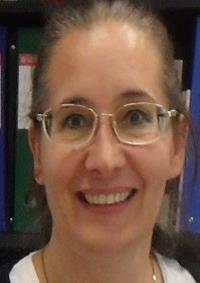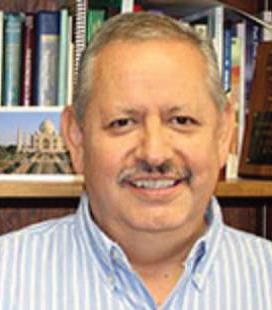Day 2 :
Keynote Forum
Fabienne Trolard
INRA-UAPV, UMR EMMAH, France
Keynote: How to address sustainability in agriculture?
Time : 10:00-10:40

Biography:
Abstract:
In the world, agriculture developed 10,000 years ago, most of plant and animal species of man’s interest have been domesticated. Today's agriculture still relies almost exclusively on these same species. According to global changes and the challenges of food security, scientists are being questioned by decision-makers and stakeholders in the territories on the sustainability of agrosystems. Valuable information on this topic and recommendations can be derived from the study of practices and processes related to agriculture over time. Long-time (up to 1,000 years), middle-time (around 50-60 years) and short-time (one hour to 3-4 months) studies illustrate hereafter the field of possibilities to produce this information. In the first example, the period from 4500 years BP till date was explored by the help of palynological determinations of pollens extracted from a continuous 720-cm core drilled on the delta of Mirna River (gulf of Venice) in the coastal zone of the Adriatic Sea. With an average chronological resolution for core stratigraphy of 7 years per cm, a succession of agro-pastoral activities has been observed, with cereals (about 3000 years BP), olive growing, viticulture and orchards (about 2000 years BP). It can also be noted the abandonment of all agricultural activities in this zone during more than 600 years, which can be ascribed to the consequence of the major volcanic eruption of Santorini (1,650 years BC). In the second example, the consequences of intensive agriculture of the last 60 years have been studied in two agro-systems in the South-East of France: In the rice cropping in Camargue and in the meadows in Crau’s area (hay production with a COP label). In Camargue, X-ray diffraction on the clay fraction in the paddy soils, compared to a control, show a significant increase of the clay crystallinity in the paddy soil, which implies a decrease of their solubility and thus of silica bioavailability for plant growth. The sustainability of rice crop system requires the clearing of silica exportations. In Crau’s area, long-term database concerning hay’s mineral content, dry matter and climate dynamics have been statistically analyzed. Results show a steady state (in quantity and quality) of the production despite an average temperature increase of 1.9 °C since 1960. Our findings suggest that irrigation, both with the water inputs and quality of water, has played a key role for the sustainability of hay production since the 16th century. In the third example, the short time (~1 hour intervals) of processes in agriculture has been explored during several rice crop seasons by in situ monitoring of water in waterlogged soils. Relationships between variations of the chemical composition of water and plant growth have been established from field data. Kinetical modeling of digestion of nitrogen fertilization by the agro-system has been proposed and allow for separating biotic from abiotic processes and defining characteristic times of relaxation.
Keynote Forum
John M Jemison
University of Maine, USA
Keynote: Innovative practices for dairy and potato farmers to adapt in increasingly variable climatic conditions: Lessons learned in Maine

Biography:
Abstract:
Keynote Forum
Jaime Malaga
Texas Tech University, USA
Keynote: Horticultural exports from developing to developed countries: Case of Latin American competition for the US market

Biography:
Abstract:
- Sustainable Agriculture | Agricultural Biotechnology & Agro-forestry | Plant Science & Weed Science | Plant Biotechnology | Food Value Chains | Crop Protection and Awareness
Session Introduction
Roberto Pasqualino
Anglia Ruskin University, UK
Title: Complexity in the global agricultural system – Threats to human development and opportunities for science
Biography:
Abstract:
Petras Lazauskas
Aleksandras Stulginskis University, Lithuania
Title: The law of the field crop performance (agrophytocenosis) productivity: The key to the future of agriculture
Biography:
Abstract:
Alvaro Sotomayor
Forest Research Institute, Chile
Title: Development and results of agroforestry in Chile: A way to connect forest and agriculture
Biography:
Abstract:
Sangwani Gondwe Makoko
African Institute of Corporate Citizenship, Malawi
Title: From farm to table: Rice quantitative value chain in Malawi
Biography:
Abstract:
Thuzar Linn
Ghent University, Belgium
Title: Mapping and analyzing value chain of rice crop in Ayeyarwady region
Biography:
Abstract:
Mxolisi Arnold Stemele
Fort Hare University, South Africa
Title: Farmer’s decision making toolbox for Plutella xylostella (L.) (Lepidoptera: Plutellidae) management on fresh market cabbage
Biography:
Abstract:
Biography:
Abstract:
- Rice & Wheat Research | Plant Biotechnology | Plant Pathology | Entomology
Session Introduction
S Leelavathi
International Centre for Genetic Engineering and Biotechnology, India
Title: Efficient transformation of submergence tolerant deep-water rice of North-East India and fast recovery of transgenic plants
Biography:
Abstract:
Yildiz Aydin
1Marmara University, Turkey
Title: Strategies for haploid plant production: Experiences from sunflower
Biography:
Abstract:
Ahu Altinkut Uncuoglu
Marmara University, Turkey
Title: The use of DNA markers in plant breeding for disease resistance: From PCR-based approaches to allele specific markers
Biography:
Abstract:
Pooran Chand
Sardar Vallabhbhai Patel University of Agriculture & Technology, India
Title: Relationship between physiological traits and grain yield in wheat (Triticum aestivum L.) under heat-stress environments
Biography:
Abstract:
- Organic Farming | Rice & Wheat Research | Agriculture Engineering & Its Applications | Agricultural Biotechnology & Agro-forestry | Plant Diversity, Conservation and Use | Post-Harvest Technology | Plant Biotechnology | Food and Nutrients
Session Introduction
Prae-ravee K-hasuwan
Ministry of Agriculture and Cooperatives, Thailand
Title: Development of organic farming using participatory guarantee systems: A case study in land reform area, Ayutthaya province, central Thailand
Biography:
Abstract:
Statement of the Problem: Farmers who are members of a Lat Bua Luang Community Rice Center (LBLCRC) in land reform area, Ayutthaya province, central Thailand, used conventional farming techniques and did not have enough profit to feed their family members. They then switched to organic rice cultivation to reduce their production costs and initiated organic vegetable production to boost their income using Participatory Guarantee Systems (PGS). PGS can improve local organic farming practices through the sharing of knowledge and experiences. PGS certification also has less administration and lower costs than third party certification. However, PGS is not prevalent in Thailand because most producers and consumers lack understanding of its processes and advantages. This study thus aims to examine the outcome of organic group processing and the interaction between the LBLCRC-member farmers and other stakeholders from participating in PGS.
Methodology & Theoretical Orientation: Collaborative action research using a concept of empowerment theory was conducted to promote the organic group processing and the ability to control selling prices. The face-to-face interviews and focus group discussions were also taken place during data collection procedures.
Findings: The participation in PGS can improve organic group process skills of the LBLCRC-member farmers and strengthen them to have better access to domestic markets rather than limiting their organic products into a local niche market.
Conclusion & Significance: PGS may be a promising alternative for smallholder farmers to develop organic group processing and to increase market accessibility. Further studies in the way to scale up other land reform areas under organic farming using PGS should be emphasized
Pooran Chand
Sardar Vallabhbhai Patel University of Agriculture & Technology, India
Title: Molecular characterization of rice (Oryza sativa L.) germplasm using SSR marker
Biography:
Abstract:
Molecular marker technologies can assist conventional breeding efforts and are valuable tools for analysis of genetics relatednessand the identifications and selection of desirable genotypes for crossing as well as for germplasm conservation in gene banks. The objectives of the present investigation were to evaluate genetic divergence, molecular characterization of 30 rice genotypes using twenty SSR markers and to evaluate the efficiency of SSR markers. Among the used 20 primers, only 15 primers amplified well and revealed polymorphic bands, whereas, remaining 5 primers showed no reaction in PCR amplification. The allele length for these 15 primers varied from 100 to 500 bp. Total of 20 alleles were detected in 30 rice genotypes and number of alleles per locus ranged from 1 to 3 with an average of 1.93 per locus. The highest number of alleles (3.0) was detected in the locus RM1, RM2-, RM26 and the lowest number of alleles (1.0) was detected from RM22, RM 138, RM182 and RM 189. The PIC (Polymorphism Information Content) values for different SSR loci across the 30 rice genotypes ranged from 0.066 (RM138 and RM 182) to 0.9 (RM31) with an average of 0.605. The PIC values indicate that RM31 might be the best marker for diversity analysis. Resolving power of the microsatellite markers used ranging from 1.6332 (RM20) to 4.3664 (RM26) with an average of 2.4686. Jaccard’s similarity coefficient revealed that Punjab Basmati 3 and Vallabh Basmati 24 were ascertained to be the genetically divergent from the other genotypes. The similarity coefficient values indicated, a wide genetic base of 30 genotypes used in the experiment. The resolving power and PIC value of primers shows that they are highly polymorphic and informative. The result derived from the analysis of genetic diversity at DNA level could be used for designing effective breeding programs aiming to broaden the genetic basis of commercially grown varieties.
